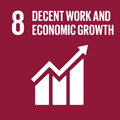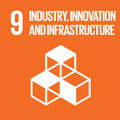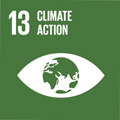- Docente: Enrico Troiani
- Credits: 6
- SSD: ING-IND/04
- Language: English
- Teaching Mode: Traditional lectures
- Campus: Forli
-
Corso:
Second cycle degree programme (LM) in
Aerospace Engineering (cod. 5723)
Also valid for Second cycle degree programme (LM) in Aerospace Engineering (cod. 5723)
-
from Feb 18, 2025 to May 30, 2025
Learning outcomes
The student becomes familiar with the classical methods for the evaluation of stress and strain field in aerospace structures, with particular focus on the semi-monocoque configurations and thin plates; he/she deepens the concepts related to the stability and buckling of structures; he/she also acquires in-depth knowledge of numerical methodologies used in the design of aerospace structures.
Course contents
1) Stress and deformation evaluation in aerospace structures:
Basic of the beam theory and its application to thin-walled aeronautical structures;
Shear-lag;
Restrained warping;
Hyperstatic and energetic methods;
Finite element method;
Theory of the plates and shell
2) Analysis of the elastic equilibrium stability and collapse
The stability concept;
Beam primary instability and collapse;
Beam torsional instability;
Instability of thin plates and collapse;
Secondary buckling of beams
Readings/Bibliography
E.F. Bruhn; “Analysis and design of flight vehicles structures”, ed. Jacobs
T.H.G. Megson; “Aircraft Structures for Engineering Students”, ed. Arnold
R. Rivello; “Theory and analysis of flight structures”, ed. McGraw-Hill
Teaching methods
Lectures are held by the course teacher. Explicit demonstration of the mathematical approach will be followed by applications to practical aerospace problems
Assessment methods
Verification of learning is carried out through an oral discussion on the topics analised during the lectures.
it is not possible to use notes, handouts, books under penalty of exclusion from the test.
Teaching tools
Computer slides by LCD projector are used in addition to the standard blackboard
Office hours
See the website of Enrico Troiani
SDGs




This teaching activity contributes to the achievement of the Sustainable Development Goals of the UN 2030 Agenda.
